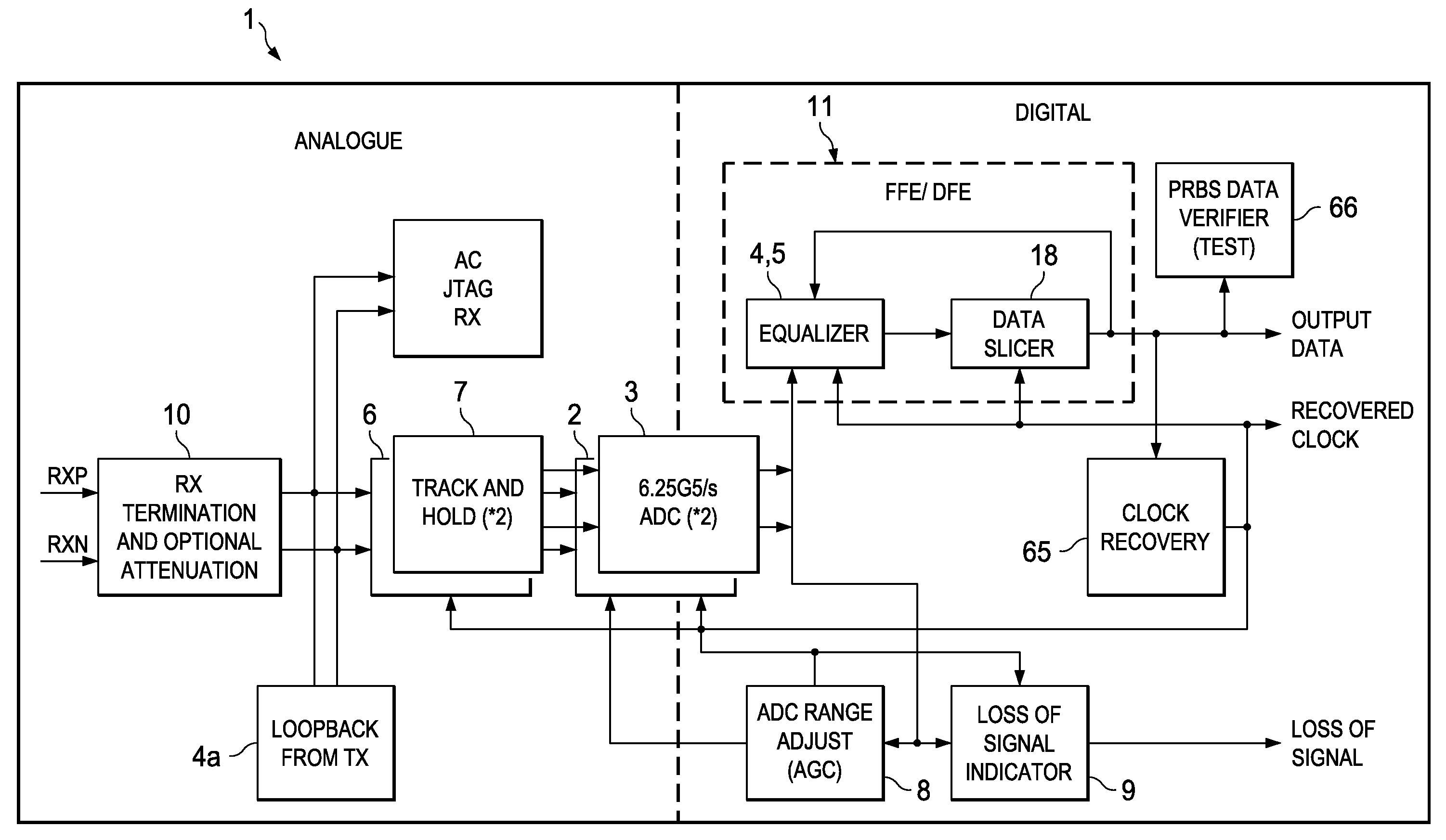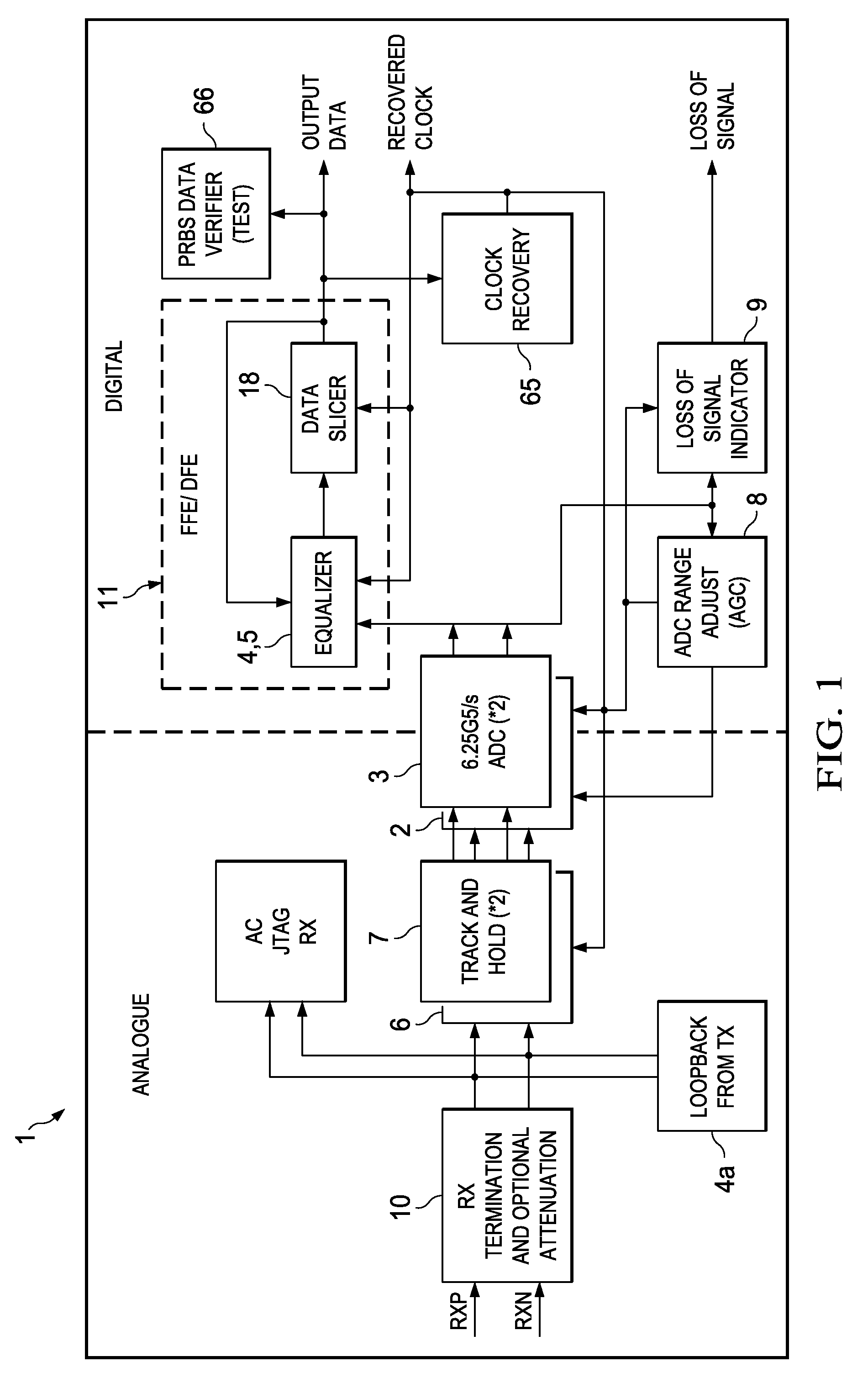Analogue Signal Modelling Routine for a Hardware Description Language
a hardware description and signal modelling technology, applied in the field of analog signal modelling routines for hardware description languages, can solve the problems of inability to add modules for circuits that operate faster than the fixed clock step length, inefficient solution, and inability to solve circuit simulations, etc., to achieve easy inversion and increase frequency
- Summary
- Abstract
- Description
- Claims
- Application Information
AI Technical Summary
Benefits of technology
Problems solved by technology
Method used
Image
Examples
Embodiment Construction
[0036]A key challenge facing designers of high-bandwidth systems such as data-routers and super-computers is the requirement to transfer large amounts of data between ICs—either on the same circuit board or between boards. This data transmission application is called Serialisation-Deserialisation or “SerDes” for short. The present invention is useful in SerDes circuit and indeed was developed for that application. Nonetheless the invention may be used in other applications.
[0037]Analysis of typical backplane channel attenuation (which is around −24 dB) and package losses (−1 to −2 dB) in the presence of crosstalk predict that an un-equalized transceiver provides inadequate performance and that decision feedback equalization (DFE) is needed to achieve error rates of less than 10-17.
[0038]Traditional decision-feedback equalization (DFE) methods for SerDes receivers rely on either modifying, in analogue, the input signal based on the data history [“A 6.25 Gb / s Binary Adaptive DFE with ...
PUM
 Login to View More
Login to View More Abstract
Description
Claims
Application Information
 Login to View More
Login to View More - R&D
- Intellectual Property
- Life Sciences
- Materials
- Tech Scout
- Unparalleled Data Quality
- Higher Quality Content
- 60% Fewer Hallucinations
Browse by: Latest US Patents, China's latest patents, Technical Efficacy Thesaurus, Application Domain, Technology Topic, Popular Technical Reports.
© 2025 PatSnap. All rights reserved.Legal|Privacy policy|Modern Slavery Act Transparency Statement|Sitemap|About US| Contact US: help@patsnap.com



